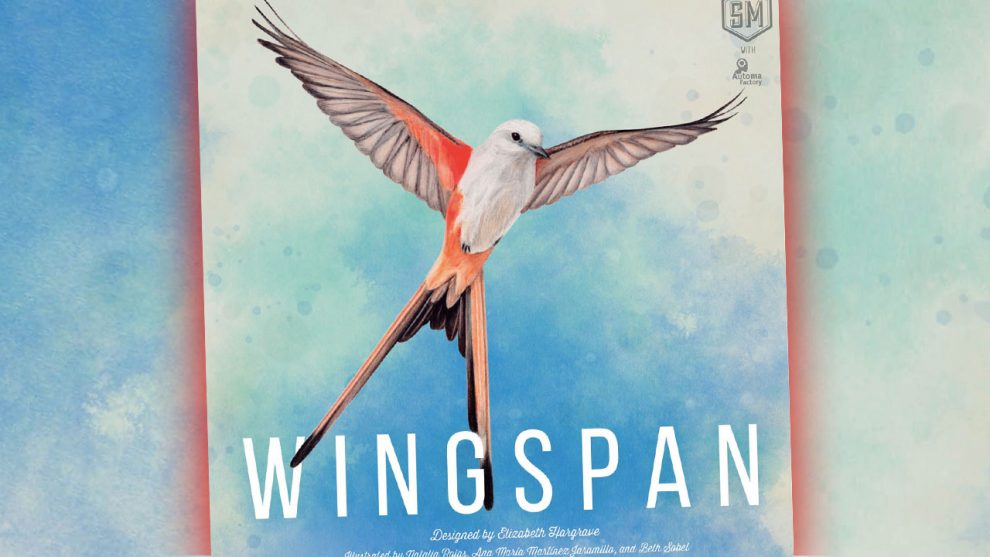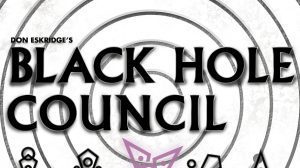What is there to say about Wingspan? It’s won numerous awards, and there are several expansions in the works. The artwork highlights the beauty of these feathered dinosaurs while arming itself with a marketable theme. However, I owned this game. Yes, past tense. Like many others, I did purchase this based on the hype. After playing over a dozen times, I sold it without a second thought. We will examine why that happened.
Before we dive in, we need to talk about the flow and theme. You and your friends are bird enthusiasts with your sanctuaries and personal agendas to complete. For whatever reason, you decide to have a competition to see who can have the best bird sanctuary out of the group in four rounds. To measure your success, you will gain victory points which will come from a variety of sources such as eggs, bird cards, tucked cards, and bonus cards. Don’t you love board games pretending they have a sensible theme?
The trick here is there are severe restrictions you must maneuver around. Each round, you will start with a certain number of “action cubes” that you will spend on each turn. When everyone’s cubes have run out, the next round begins but with one less cube. The purpose behind this is to make the beginning of the game focus on sanctuary building while the latter part of the game aims towards executing your sanctuary’s abilities with the bird cards.

Ducks In A Row
Like the action cubes, there is a set of regulations that you must follow for your birds. Your sanctuary is divided into three rows representing the three habitats. Each habitat personifies a game mechanism. Forests give you food from a community dice pool that you will spend to play bird cards from your hand. Grasslands allow you to lay eggs which give you points. The Wetlands allow you to draw bird cards from the random market into your hand.
Whenever you play a bird card, you must place it in one of the rows at the first open slot on the left side. Some birds have specific habitats they want to reside in. Like any other tableau builder, each card will have its abilities triggered when activated. After placing these birds, you cannot move them. The idea behind this is when you activate a row using one of your action cubes, you start from the rightmost bird and move down the line to activate the birds’ abilities. Furthermore, the more birds you have in a single habitat, the action for that habitant becomes stronger. Instead of drawing one card, you will draw three, or lay several eggs instead of one.
To give an example of how this could potentially work, you could activate the Grasslands. Due to the two bird cards you’ve placed in that habitat, you immediately get 3 eggs to place on your birds. After the eggs, the “Canada Goose” allows you to discard 1 wheat food token to tuck 2 cards from the deck, giving you 2 points at the end of the game. Next to the Goose is the “Eastern Phoebe” which gives everyone 1 green grub food token. Your turn ends afterward. This row, completely designed by you, will always proceed in this way each time you activate the Grassland row.

Essentially, this is a game about being efficient with the action cubes. Instead of spending a better half of a dog’s lifespan building some elaborate engine, you are trying to figure how to squeeze as many points as can from each cube spent. It is a problem chiseling your brain until you reach the game’s conclusion. As someone well-versed in tableau builders, this is such a fantastic concept and it keeps the game going at a good pace like a fighter jet going through clear skies.
One of the biggest attractions of tableau builders is the replayability of the genre. Due to the random nature of card draws, each game will feel different. Wingspan hits this stride with its own red carpet and entourage. Outside of the usual card abilities, birds can only go to certain habitats meaning the strengths of your specific actions will be different every single game. One game you might have a lot of Waterbirds which means you are drawing an insane amount of cards but barely any food to spend, while the next game is a far more balanced approach. As someone who has played this game over a dozen times, it definitely changes how you tackle the game’s challenges.
I’m giving a lot of praise to a game that I claim to dislike. Why would I sell this? Let’s talk about that.
Love the Rows, Hate the Scoring
Wingspan is a “Point Salad” game. For those unfamiliar with the industry slang, it means a game that has several ways to score points that seem unfocused. The term is so embedded into tabletop culture that AEG published a game with this name to demonstrate how it works.
One of the most common avenues to score is by playing birds since they are worth points. You can also lay eggs since they are worth one point each. These two methods are perfectly fine because you have plenty of agency to earn their rewards. That’s not my problem. My issue is the Bonus cards and the end of round tiles.

At the start of every game, you’ll be given two Bonus cards and have to pick one. There is also a set of four randomly determined end of round scoring tiles. The Bonus cards are focused on gathering cards such as particular bird power types or geography terms in the bird’s names. The end of round goal tiles is fixated on having a majority of something, like most eggs in Grassland birds or most birds in the Forest. In short, these are glorified set collection goals.
To put it into perspective, this is a game that gives you plenty of ways to use the game’s mechanisms to your advantage through understanding the relationships and combos with the birds. You choose what birds to play with and where to play them, which is a crucial element. Yet a good portion of your points is going to be decided by what type of cards you draw with barely any connection to your tableau. This isn’t a marriage of mechanisms working well together; it’s an awkward one-night stand.
This issue is further compounded by the sheer deck size. There are going to be situations where you cannot fulfill your Bonus cards or End of Round scoring since the cards you need are buried in the deck. There is a huge difference between having the opportunity and not taking it versus never having the opportunity at all.
Because of how the scoring is designed, it makes victories and defeats feel hollow. If you lose, it’s because you didn’t draw what you needed. If you win, it’s because everything just happens to fall on your lap. The game tries to give the impression that it rewards you for making the right decisions, yet a chunk of the scoring is reduced to “draw the right cards” which is a contradiction to the perception of the game.
Dying Last Rounds
Even the action cube concept doesn’t work as well as it should. While it is an interesting idea, it begins to falter towards the latter half of the game. It is noticeable on the 4th round when you are constantly activating a developed row or two with very little input on your part. The reason why you would do this is the simple fact that anything else won’t generate as many victory points as your rows, especially the Grasslands rows that can easily net you 3 or 4 points per activation due to the eggs in addition to your bird cards.
The final complaint I have mirrors every other Stonemaier game. There is very little value in playing this game with a high number of players, especially at the five-player count. There is barely any interaction with other players outside of grabbing the community dice or bird cards. One can protest to say competition with the end of round tiles is the benefit, but that is already done with as little as two or three players. Furthermore, I pointed out five players specifically since the downtime is unbearable and there aren’t enough eggs for a five-player game. That is unacceptable.
Yet despite my review, this game isn’t going anywhere. No amount of unfavorable or skeptical opinions will ever change the public perception of this game. As a fan of tableau builders, I had to grit my teeth because there are plenty of superb mechanisms here tied with obnoxious elements that made me look elsewhere. It’s a game that I had to walk away from because there are other tableau builders with a bit more refinement out there that offer more to my experience.
If you prefer your board games as apps, then check out our review of Wingspan Digital.
You can purchase this game at Amazon US












I haven’t had the chance to play this yet so I cannot judge it, but it surprises me how you mention you played it over a dozen times times (14?, 15?, over how many months? I believe this game is only around a year old) and say you do not like it. My collection is not big, I have around thirty five games. I can tell you I can count with just two fingers those I have played over a dozen times in a year. The ones I did sell, were gone after 4 or 5 plays. You should know by then it is not for you.
Also, money wise, if you paid lets say $50 for this and got 15 games, and sold it for probably a high price since it is always out of stock and in high demand, I reckon you got a price per play of around $1. I am not sure you can complain it was a waste of money either.
He might have played 15 times cause his group want it and love it, or he was trying to give the game a second chance.. etc etc. There are several posible reasons and it doesn’t mean he was enjoying the game
If your whole family or game group love and keep insisting on playing a game you cannot wait to get rid off, that is something that should be mentioned on the review. About giving the game a second chance… You don’t go to a restaurant 15 times and say you do not enjoy their food.
So you’re complaining that someone played a game *too* many times before reviewing it? If they said they’d played it once or twice, there’d be people complaining that “you didn’t give it a fair shot, you need to play it X times before it gets good”.
Also: “$ cost” divided by “times played” might be valid consumer advice, but isn’t a useful metric for game reviews. (By that metric, the free copy of monopoly I got as a kid is “objectively” the best game I’ve ever played. ) The idea that you can’t criticize a game if you got your money’s value out of it is just a silly way to approach game criticism.
What would be some tableau or engine builders you would recommend instead? At the end of the review you mention there are better refined ones out there.
I agree with your criticisms, the base game was insufferable, as so much depends on the luck of the draw from both the bonus and bird decks. The European Expansion helped my perception of the game in a number of ways, mainly around balance and player interaction. In my last 3 player game, all three of us were in close competition for the final two end of round bonuses, and there was near clear overall leader. Not that an expansion should be required, but I would suggest playing with EE to see if it changes the gameplay experience.
I think the game would benefit from a Mulligan rule or snake draft for starting hands. A slow start is often unrecoverable, since there’s no guarantee you’ll be able to draw birds beneficial to your goals, and you have to spend actions to do so.
It’s a game I want to love, but can’t. I don’t mind playing it on Tabletopia, where it’s part of my subscription, but I doubt I’ll ever own a physical copy, as I find the shortcomings quite vexing.